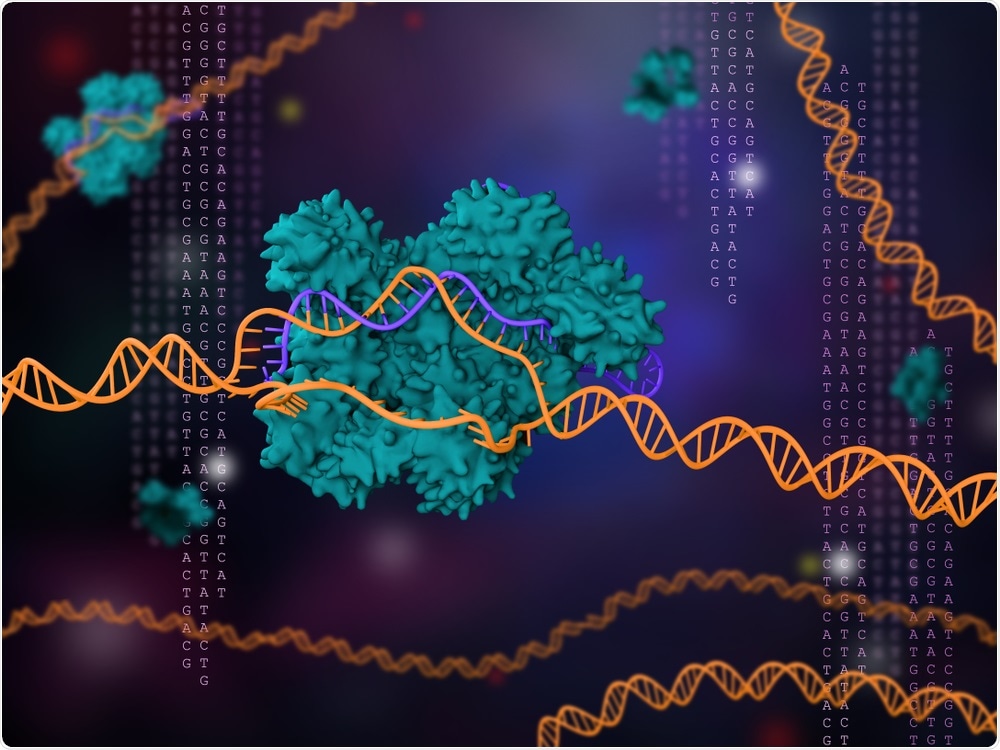For the first time, Yiping Qi, an associate professor in Plant Science, together with Dennis vanEngelsdorp, also an associate professor from the University of Maryland (UMD) in Entomology, has represented the College of Agriculture & Natural Resources on the Web of Science 2020 list of Highly Cited Researchers. vanEngelsdorp has been named for his research work in honey bee and pollinator health for the fifth consecutive year.

CRISPR Cas9 Technology. Image Credit: Meletios Verras/Shutterstock.com
The 2020 list contains prominent researchers based on the effect of their academic publications over the duration of the year. Besides this honor, Qi is already making inroads in the current year of 2021 with the latest high-profile publication in the Nature Plants journal, launching a recently engineered variant of the well-known CRISPR-Cas9 gene-editing tool, called SpRY.
The SpRY variant primarily eliminates the limitations of what can and cannot be targeted for gene editing, rendering it feasible to target almost any sequence of genomes in plants for possible mutation, for the first time. As the leading innovator in the field, this finding is the latest of Qi’s discoveries in a long string of prominent tools for genome editing in plants.
“It is an honor, an encouragement, and recognition of my contribution to the science community,” stated Qi of his distinction as a 2020 Web of Science Highly Cited Researcher.
But we are not just making contributions to the academic literature. In my lab, we are constantly pushing new tools for improved gene editing out to scientists to make an impact.”
Yiping Qi, Associate Professor in Plant Science, College of Agriculture & Natural Resources, University of Maryland
With the SpRY tool, Qi is particularly excited for the endless possibilities it provides for genome editing in crops and plants.
We have largely overcome the major bottleneck in plant genome editing, which is the targeting scope restrictions associated with CRISPR-Cas9. With this new toolbox, we pretty much removed this restriction, and we can target almost anywhere in the plant genome.”
Yiping Qi, Associate Professor in Plant Science, College of Agriculture & Natural Resources, University of Maryland
The initial CRISPR-Cas9 tool that triggered the gene-editing trend was tied to targeting a particular short DNA sequence, called a PAM sequence. The short sequence is typically used by the CRISPR systems to detect where to make their molecular cuts in DNA. But the latest SpRY vabriant developed by Qi can move further than these conventional PAM sequences in ways that were never feasible before.
Qi added excitedly, “This unleashes the full potential of CRISPR-Cas9 genome editing for plant genetics and crop improvement.”
Researchers will now be able to edit anywhere within their favorable genes, without questioning whether the sites are editable or not. The new tools make genome editing more powerful, more accessible, and more versatile so that many of the editing outcomes which were previously hard to achieve can now be all realized.”
Yiping Qi, Associate Professor in Plant Science, College of Agriculture & Natural Resources University of Maryland
According to Qi, this will have a significant effect on translational studies in the field of gene editing and also on crop breeding in general.
“This new CRISPR-Cas9 technology will play an important role in food security, nutrition, and safety. CRISPR tools are already widely used for introducing tailored mutations into crops for enhanced yield, nutrition, biotic and abiotic stress resistance, and more. With this new tool in the toolbox, we can speed up evolution and the agricultural revolution. I expect many plant biologists and breeders will use the toolbox in different crops. The list of potential applications of this new toolbox is endless,” Qi concluded.
Source:
Journal reference:
Ren, Q., et al. (2021) PAM-less plant genome editing using a CRISPR–SpRY toolbox. Nature Plants. doi.org/10.1038/s41477-020-00827-4.